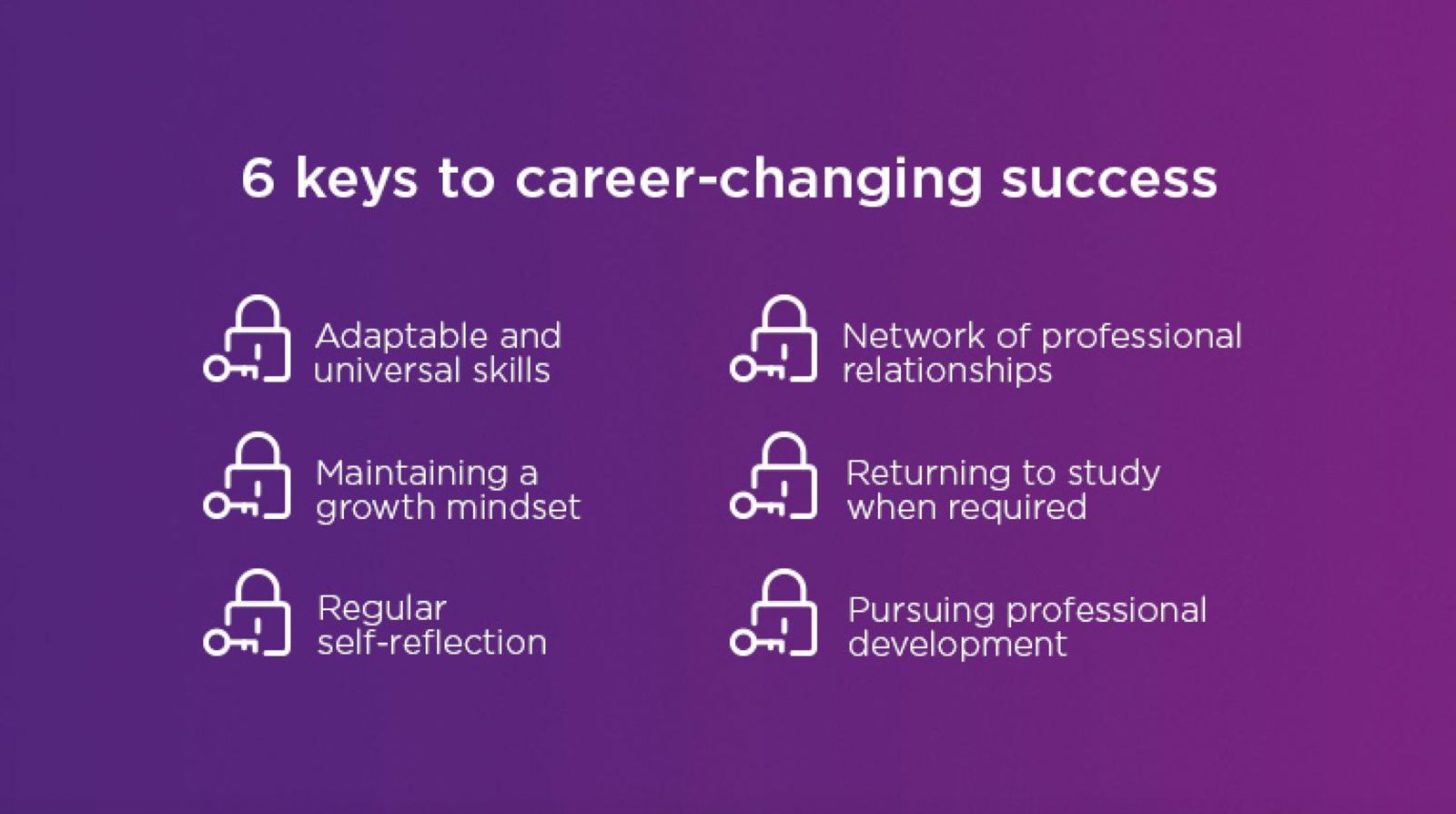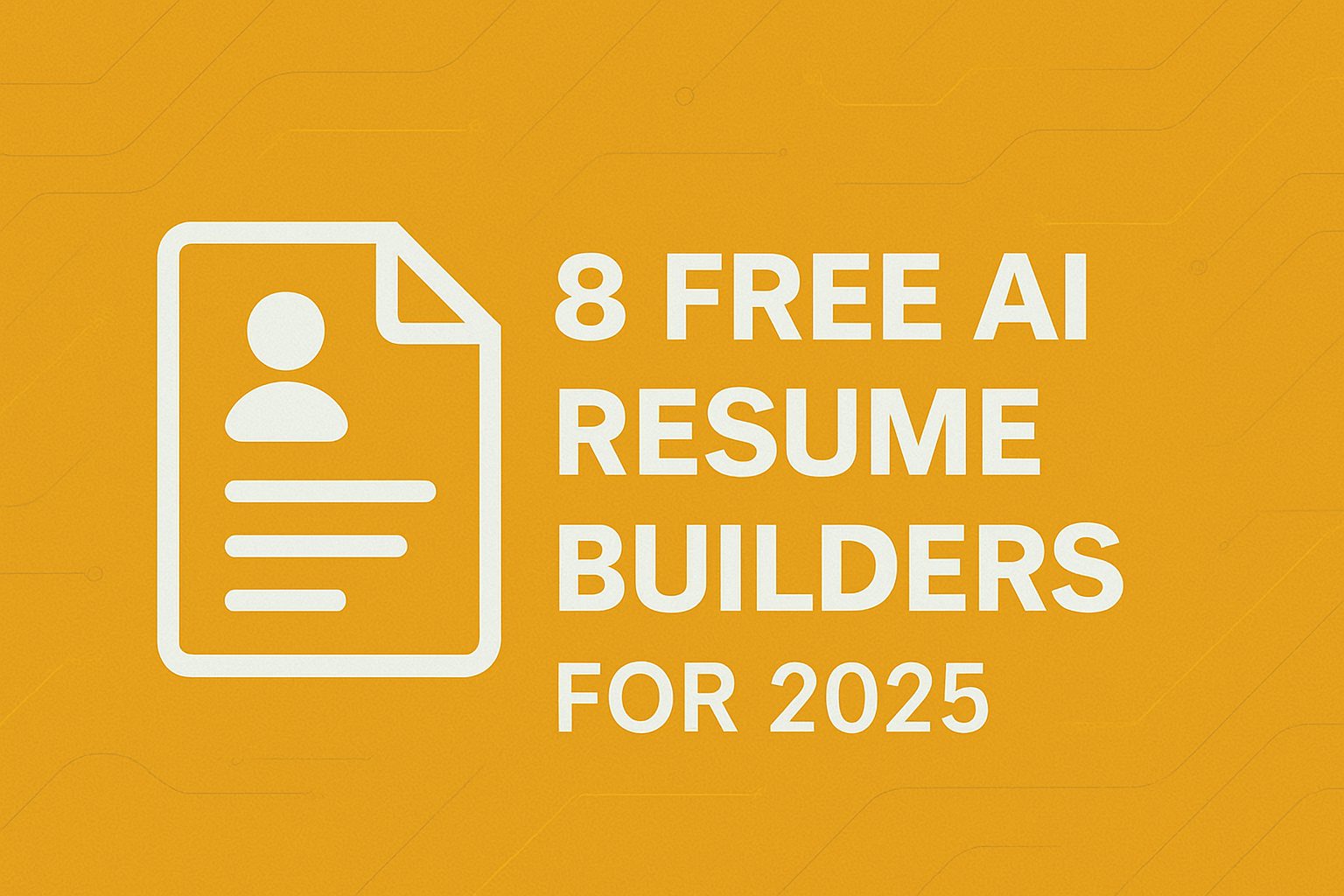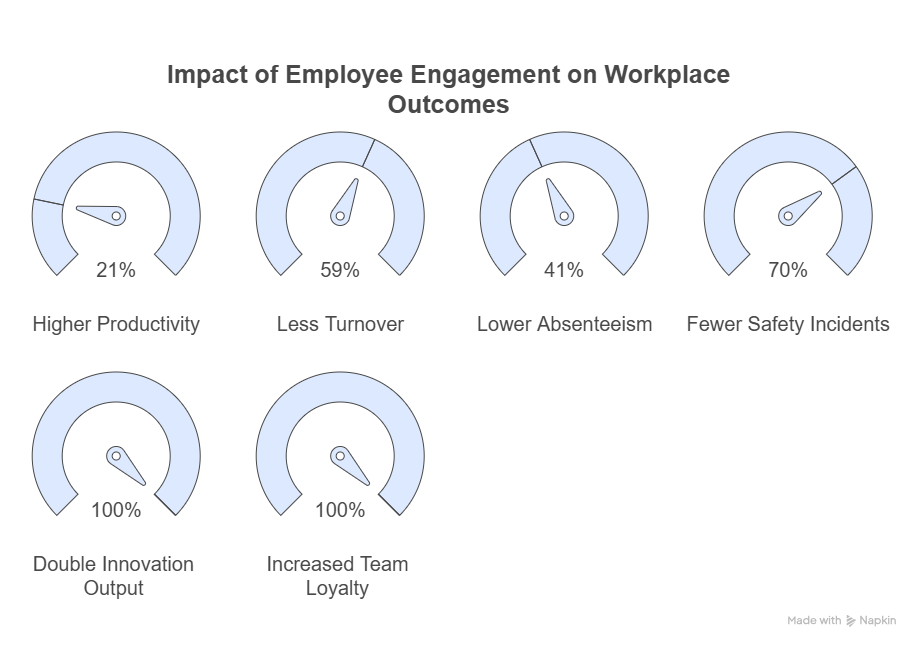Making a career transition is a pivotal decision for any professional. Whether you’re looking to enter a new industry, pursue a leadership role, or switch to an entirely different field, the process can feel overwhelming.
Leaving behind everything you have been working on and looking for something new instills the fear of unknown territories.
“How to switch career paths?”
“Will I be able to make it?”
“What will happen to my family if I fail?”
“Is this the right decision?”
However, a career shift doesn’t have to be daunting with the right strategies in place.
We’ll walk you through the steps to ensure a smooth transition, from assessing your skills and setting goals to networking effectively and adapting to new environments. Ready to take your next big leap? Let’s get started.
Seven Steps to Smooth Career Switch
Career switch goes far beyond changing your resume and cover letter.
It challenges your skills, comfort, and morale. However, it also brings a sense of self-discovery and many new opportunities.
When Jeff Bezos decided to quit his high-paying investing job and move into selling books online under Amazon, it was not easy.
In an interview, he went on to say,
“So it was really a decision I had to make for myself. The framework I found that made the decision incredibly easy was what I called — only a nerd would call – a regret minimisation framework.”
When actor Saanand Verma, known for his hilarious tagline “I Like It” in the iconic show “Bhabhiji Ghar Par Hain,” thought of leaving his luxurious corporate life and joining cinema, many frowned upon him.
But both decided through a process called: ‘Regret Minimization Framework’
We’ll discuss this later in the article.
Now, to help you dodge most people’s mistakes, we’ve simplified the path to a smooth career switch into seven steps.
1 – Start with the ‘Why’
The idea of switching jobs often arises before it’s truly necessary. For example, the sudden advent of AI made many consider their present job security and pushed them to switch
There are many reasons to consider a career change, such as:
- A sudden shift in the market pushes job insecurity into lives
- Inability to meet financial needs and requirements
- Finding other industries quite lucrative (especially when money is your final goal)
- A misalignment of your skills and your present job
- A craving to try something new and feel purposeful
Before making a decision, ask yourself why you want to quit. Understanding your motivation will guide your next steps.
Sometimes, it’s only about the wrong boat
Sometimes, the reason is not the industry but the current company. Corporate politics, fussy bosses, and bad management can make you feel you are in the wrong place– when it’s really just the wrong boat.
Proper research is the key
Most often, the right step comes in the form of proper planning and research.
I remember being tempted by the ongoing trend in coding and the sheer monetary gain. I made the shift without considering much, only to realize later that tech was not for me.
To find your ‘WHY’, find answers to these:
- Assess your current role
Understanding what you like or dislike about your current job helps clarify what you seek in a new role. Reflect on your daily tasks, growth opportunities, work environment, and whether your role aligns with your long-term career aspirations.
- Identify long-term goals
Career changes should be driven by where you want to go, not just by dissatisfaction with your current job. Identify where you want to be in the next 5-10 years. Consider job titles, industries, and the skills required for those roles. Align these goals with your personal values and interests.
- Analyze the market for volatility
Some industries may be growing, while others are shrinking. Understanding market trends ensures you move toward a stable and promising field. Research industries, job demand, and salary trends. Pay attention to technological shifts, like AI or automation, that could impact future job security.
- Talk to those already doing well in that field
Reach out to your LinkedIn connections and attend industry events. Ask about their experiences, what skills are in demand, and how they got started. This can help determine whether the new career path is the right fit for you.
2 – Visualize Your Future Self
If you’ve done your proper research, you might have a few career options on your hand. Now, take a step back and visualize yourself in that area.
Picture yourself 10 or even 40 years from now—are you enjoying it? Consider everything from work-life balance to your sense of purpose.
One helpful tool is the concept of Ikigai, a Japanese philosophy that helps you identify your “reason for being.” It focuses on four key areas:
- What you love
- What the world needs
- What you excel at
- And what you can get paid for
Answer these things and it can help you have a rewarding career switch.
The Concept of “Regret Minimization Framework’
When people like Jeff Bezos and Saanand Verma made a strong career switch, they went through a concept called ‘regret minimisation.’ It is about these three things:
- Project yourself forward: Imagine yourself at 80 years old.
- Minimise regrets: Consider what you’d regret not doing.
- Make a decision: Choose the path that minimises future regrets.
Will you regret so much not taking this path in the future? If the answer is yes, it is time to move. But answer this with enough information at your hand.
In this process, you must find answers to:
Where do you want to be in 10 or 20 years, focusing on personal and professional aspects, such as work-life balance, financial goals, and sense of purpose?
3 – Assess Your Skills and Capabilities
It’s great to have a passion, but do you have the soft and hard skills to thrive in your new career? This is where self-assessment becomes crucial.
- Make a list
Make a list of your strengths and skills. There are skills that you can carry forward:
We call them Transferable Skills—valuable abilities across different jobs and industries. These could include:
- Leadership abilities
- Creative problem-solving
- Brainstorming skills
- Deep research capabilities
- Adaptability
These transferable skills are assets you can carry into your new role.
Once you have a list of your skills and strengths, strike out any skills that won’t be useful in your new career.
Checkout the top 10 Top 10 In-Demand Skills for Jobs in 2024
-
Identify Gaps and Challenges
When making a career switch, there will always be new areas you need to work on. Your proper research in the earlier stages might have given you some insight into these areas. Know what new skills you need to get. Research your target industry and note any new or unfamiliar skills. Make a list of these gaps to help prioritize your learning.
-
Compare Job Descriptions to find the needed skills
Check job descriptions on platforms like LinkedIn, Indeed or Abekus jobs to get an idea of the industry’s specific skill requirements. Browse relevant job boards, analyze several job descriptions, and highlight recurring keywords and skills. If there are terms or tasks you don’t know, add them to your learning plan.
For example, a job description about copywriting might include keywords like “sales funnel”. If this is something you don’t know, learn it.
4 – Develop a plan
Once you have checked right all the questions and challenges and decided to move, it’s time to create a plan. This means working on a few things in the coming weeks:
- Skilling up
- Networking
- Applying
Enhance Your Skills
According to the World Economic Forum’s Future of Jobs Report 2023, technological changes are expected to disrupt two-fifths of the essential skills workers possess by 2027.
Half of all workers will need to refresh their core skills every five years. Even if you don’t want to change your job, upskilling is crucial to keeping your current job and getting a new one.
So, if you lack certain skills that the new career requires, skill up.
- Outline a roadmap: Create a roadmap outlining steps to bridge skill gaps. You can use platforms like Coursera, HubSpot, or Udemy for courses that provide certifications to enhance your resume.
- Break Down Your Goals: Set small, achievable learning goals. For example, “I’ll spend 1 hour daily studying DBMS for 2 weeks and practice coding on LeetCode for 2 hours each day.”
- Create a Timeline: Establish deadlines for acquiring specific skills. This will keep you accountable and help you track progress.
- Set Financial and Lifestyle Boundaries: While skilling up, be mindful of your financial and personal needs. Set boundaries to ensure you’re not burning out while juggling learning, work, and life.
- Make use of online platforms: Enrol in online platforms like Abekus for up-skilling and practicing
- Track Your Progress: Keep track of your plan and your progress to ensure you know the minute details. For example, create a Notion document to keep track of your courses and timeline or use Rize app to count your time spent on upskilling.
Network
Optimize your LinkedIn profile, connect with professionals in your target industry, and engage with their content. You’ll gain insights into necessary skills and trends, helping you blend these learnings with your existing transferable skills.
Use peer referrals when applying for jobs. This helps you get a little ahead in line of the applicants.
Here’s how to optimize your LinkedIn profile for better reach and connection
5 – Manage Your Expectation
One of the biggest hurdles during a career shift is setting unrealistic expectations.
It’s natural to want immediate success, but managing what is truly possible will help you avoid frustration. Here’s how to approach it:
- Rather than expecting a high-paying job or mastering your new field in just a few weeks, break your journey into smaller, achievable parts. Taking micro-steps and breaking your journey into smaller, achievable goals can keep you uplifted.
Divide your career transition into smaller milestones, such as learning specific skills, networking, or applying for jobs.
- Do your research on the current market trends and salary expectations. Websites like Glassdoor, AmbitionBox, or PayScale can provide insight into the average pay for your experience level in the new industry, helping you set realistic salary goals.
- Set SMART goals – Specific, Measurable, Actionable, Relevant, and Time-bound – to give yourself a clear aim.
For example – Within three months, I’ll secure a sports journalism job interview by applying for five positions per day, increasing LinkedIn connections by 20%, and dedicating 30 minutes daily to job applications and networking.
6 – Prepare For Obstacles
It will never be easy. Expect challenges in your career transition, but don’t be discouraged.
If you are applying for new jobs, prepare yourself for rejection after rejection.
If you are starting a new business, prepare for the fall. This does not mean being negative. It is about bracing yourself for the impact.
Acknowledge the Learning Curve: Adapting to a new career will take time, patience, and constant learning.
Stay Open to Adjustments: When unexpected challenges arise, you may need to revise your plans or pivot. Instead of getting anxious, angry, and disheartened, get flexible to change.
Manage Financial Expectations: Understand that initial financial returns may be lower than expected. Plan your finances with a long-term perspective. Budget for a few months of lower income and plan your expenses carefully until your new career gains traction.
Focus on Long-Term Gains: Stay focused on your ultimate goal, even if the journey is tough in the short term.
Involve Your Family: Support from loved ones is crucial for emotional stability. Discuss your plans with your family and make sure they’re on board. This will ease some of the stress as you move forward.
7 – Embrace the Journey- a pro-tip
Work is a part of life, and life is a journey full of changes. To live it to the core, you must embrace all the aspects of this journey. Making a career switch will surely be challenging, but it doesn’t have to be depressing.
Approach the career transition with an open mind and a continuous learning attitude.
- Celebrate small wins
- Learn from setbacks
- Stay curious and learn as much as you can
- Reflect on your progress, but don’t judge yourself for failure; stay positive about taking small steps
- Connect with others on the same path
- Take responsibility and be willing to change
Conclusion
Transitioning to a new career is a significant journey that demands introspection, planning, and resilience.
Remember, every step—big or small—contributes to your growth and development.
Always keep in mind the ‘why’ you started your journey with. And who knows, one day, when you look back and see the moment you decided to make a career shift, you’ll be proud of how you aced it.
To achieve your career goals faster master skills faster, practise at Abekus!







